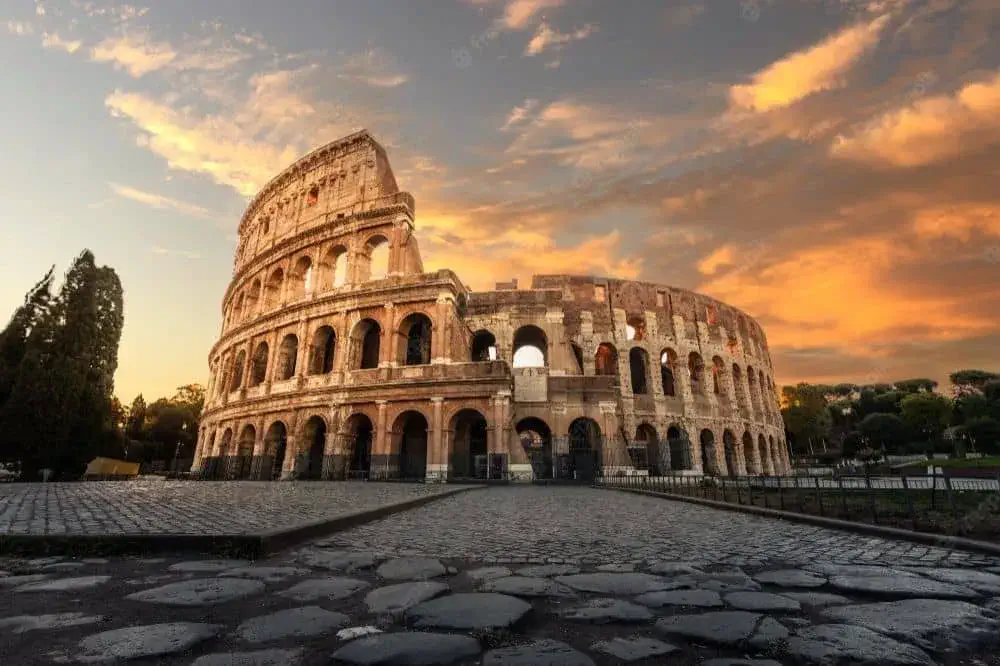
Across centuries, the centres of civilization, political authority and creativity have been the city-states. These cities were cultural and architectural giants and political, economic, and even intellectual giants. Some of them prepared the basis for the new civilizations, and their experience ranged from government to trade. In this article, we get a view of the ten most significant ancient cities of all time, what they represented, and their tremendous influence on the world.
Table of Contents
10 Greatest Ancient Cities in the World
1. Jericho (Palestine)

Founded: c. 9000 BCE
Highlights: Jericho is generally recognized as the oldest inhabited city in the world. It was near the Jordan River, and as such, early human habitation was due to the availability of the resources.
Legacy: It is especially famous for its ancient city walls, one of the first fortified areas in history. They portray the onset of urban centres as well as farming.
2. Uruk (Iraq)

Founded: c. 4000 BCE
Highlights: Being one of the largest cities in Sumer and a centre of intense cultural activity, Uruk was an impressive centre. It is also attributed to the invention of the cuneiform type of writing, one of the earliest writing methods.
Legacy: Uruk’s aforementioned integrated practices of writing, Central Administration, and urban planning were fundamental to the emergent Mesopotamian and subsequent civilization[s].
3. Memphis (Egypt)

Founded: c. 3100 BCE
Highlights: In the Old Kingdom, Memphis was the capital of the whole Egyptian empire and the focus of trade, art and religion. It is most evidently connected with the great Egyptian dynasties and the construction of pyramids.
Legacy: Memphis, as the centre of political and religious affairs of ancient Egyptians significantly influenced the art, architecture and, in particular, religious cults.
4. Babylon (Iraq)

Founded: c. 2300 BCE
Highlights: Home of one of the world’s seven wonders, the Hanging Gardens, Babylon has been a significant city with monumental importance as a hub of the Babylonian Empire. It was famous for its highly developed inventions based on culture, science, and various other aspects.
Legacy: The legal system of early civilization expanded when the Code of Hammurabi was set to a legal code of Babylon.
5. Thebes (Egypt)

Founded: c. 2000 BCE
Highlights: During the New Kingdom, Thebes became one of Egypt’s most recognized capitals, with the religious temples of Karnak and Luxor. It was also a very spiritual city in the middle of Egypt.
Legacy: Many details of the architectural and religious history of Thebes are still attracting the world’s interest, particularly the monuments dedicated to the gods.
6. Athens (Greece)

Founded: c. 1400 BCE
Highlights: Of course, it is a city famous for being the birthplace of democracy, philosophy, arts, etc. It gave birth to Socrates, Plato & Aristotle, had world-famous buildings like the Parthenon & was famous for its philosophy & politics.
Legacy: Athens is noted for having made unique contributions to democracy, philosophy, theatre and the sciences, the arts, literature the sciences and much more.
7. Rome (Italy)

Founded: c. 753 BCE
Highlights: Rome was the world’s leading centre of politics and culture in that epoch, showcasing Roman engineers’ skills. The Romans were the first to construct highways, water channels, aqueducts, and amphitheatre, such as the Colosseum and the Roman Forum.
Legacy: Due to Rome’s legal systems, architectural style and political system, the work laid down the framework on which much of the modern Western world is built.
8. Persepolis (Iran)

Founded: c. 518 BCE
Highlights: Perspolis was the festive capital chosen by Darius 1 to build as the Achaemenid Empire capital. It was famous for its royal palaces, beautifully carved reliefs, and gates.
Legacy: Persepolis represents the authority and civilization of Persians and has made a powerful impression on the architecture and rulership icons in the area.
9. Teotihuacan (Mexico)

Founded: c. 100 BCE
Highlights: Home to the world’s third largest pyramid, called “Pyramid of the Sun” and “Pyramid of the Moon”, Teotihuacan was one of the world’s largest cities in the pre-contact Mesoamerican. Its city sketch, town planning, and unexplored architectural edifice remain an enigma.
Legacy: Some of Teotihuacan’s architectural developments are still a subject of interest among scholars to this date, and it was in Teotihuacan that later civilizations like the Aztecs got their inspiration.
10. Xian ( China)

Founded: c. 1046 BCE
Highlights: Xian is a city located in northern China, and it has been the capital of different dynasties. Trade city at the heart of the Silk Road and has the Terracotta Army to guard China’s first emperor.
Legacy: New details of culture, politics, and its part in the Silk Road have identified Xi’an as one of ancient East Asia’s most influential cities.
You Might like
10 Longest Rivers in the World
10 most beautiful islands in the world
10 Largest Regional Forests in The World
10 Most Serene Places of Natural Beauty in the World
Top 10 Tallest Buildings in the World
Comparison Chart
| City | Country | Founded | Key Highlights | Legacy |
|---|---|---|---|---|
| 1. Jericho | Palestine | c. 9000 BCE | Oldest inhabited city, city walls | Beginnings of urbanization and agriculture |
| 2. Uruk | Iraq | c. 4000 BCE | Cuneiform writing, large urban center | Birthplace of writing and governance |
| 3. Memphis | Egypt | c. 3100 BCE | Capital of Old Kingdom, center of trade and religion | Political and religious hub |
| 4. Babylon | Iraq | c. 2300 BCE | Hanging Gardens, Code of Hammurabi | Legal codes, astronomical advancements |
| 5. Thebes | Egypt | c. 2000 BCE | Temples of Karnak and Luxor, capital of New Kingdom | Religious and architectural marvels |
| 6. Athens | Greece | c. 1400 BCE | Democracy, philosophy, the Parthenon | Foundation of Western philosophy and democracy |
| 7. Rome | Italy | c. 753 BCE | Roman roads, aqueducts, Colosseum | Foundation of Western law, engineering, politics |
| 8. Persepolis | Iran | c. 518 BCE | Ceremonial capital, grand palaces | Persian architectural and royal symbolism |
| 9. Teotihuacan | Mexico | c. 100 BCE | Pyramid of the Sun, Pyramid of the Moon | Urban planning, architectural feats in Mesoamerica |
| 10. Xian | China | c. 1046 BCE | Capital of multiple dynasties, Terracotta Army | Cultural and political hub of ancient China |
Conclusion
Some of the world’s oldest and largest cities are perhaps the physical representations of creativity, drive and civilised society. Self-sustaining structures such as the Pyramids in Egypt and the Acropolis in Athens meant that these cities were bread producers and theatres of the world’s first philosophy, democracy and human science, respectively. Today, they exist in the format of so many monuments that attract millions of tourists every year and in the laws, ideas, and technologies that have become part of people’s lives.
FAQs
Which ancient city is the oldest?
Jericho, founded around 9000 BCE, is often considered the oldest continuously inhabited city in the world.
What made Rome so powerful in ancient times?
Rome’s military prowess, advanced engineering, and efficient political systems allowed it to control vast territories and influence many aspects of Western civilization.
Why is Athens considered the birthplace of democracy?
Athens introduced the concept of democracy in the 5th century BCE, where citizens participated directly in political decisions, laying the foundation for modern democratic governments.
What happened to the city of Babylon?
Babylon fell to the Persian Empire in 539 BCE and gradually declined, though its cultural and legal influences, like the Code of Hammurabi, persisted long after its fall.
What is the significance of the Silk Road to Xian?
Xian was the eastern terminus of the Silk Road, facilitating cultural and trade exchanges between China and the rest of Asia, Europe, and Africa, making it a vital cultural hub.
